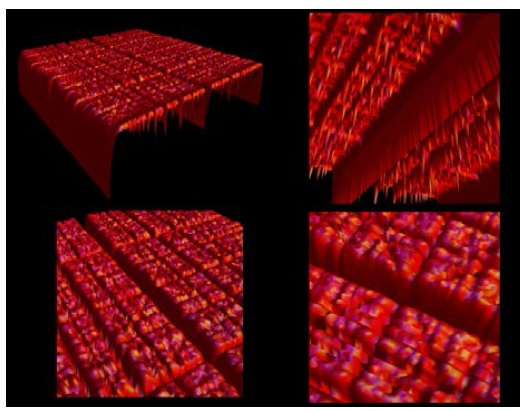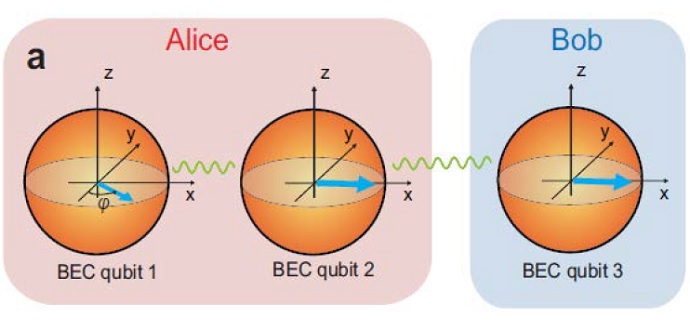June 30, 2014
Researchers from the National Institute of Informatics in Tokyo and the Russian Academy of Sciences have developed a method of teleporting objects that are large enough to be visible to the naked eye.
Teleportation is a method of sending an object (or more precisely, the quantum state of an object) from one location to another, without sending any information relating to the object itself.
The first experiments demonstrating teleportation were performed in 1997 using photons, the particles that make up light. Teleportation between atoms has also been performed.
However, teleporting larger objects than atoms or photons has proven to be difficult. Teleportation of anything as large as a person, as familiar from science-fiction programs such as Star Trek, is still thought to be virtually impossible adapting these methods.
The reason is that quantum mechanics governs the microscopic world, and tends to be difficult to observe for objects larger than tiny objects. Teleportation relies crucially on the quantum mechanical phenomenon called entanglement, which Einstein famously called a “spooky action at a distance”. For large objects the entanglement disappears almost as soon as it is created, making it useless for such tasks.
The researchers found a way to overcome this by finding a new type of entangled state which should survive for macroscopic objects. Using this entangled state, it was shown that teleportation of thousands of atoms, or larger, should be possible.
The method uses a new state of matter called a Bose-Einstein condensate, which was experimentally realized in 1995, and awarded the Nobel Prize to its discoverers a few years later. The atoms are cooled to a several billionths of a degree above absolute zero, and form a single quantum state.

Figure 2 Visualization of the new entangled state as used by the scheme. The plot shows the amount of entanglement as a function of entangling time.
While several other experimental groups have also claimed teleportation using macroscopic objects, the type of quantum state that is teleported in the current find are different. Despite the macroscopic objects that were used, the quantum state that was encoded in prior experiments was on a tiny fraction of the total degrees of freedom. In the current discovery the whole state was shown to be teleported. Drawing an analogy with teleporting a compass needle, in previous experiments the weak vibrations of the compass needle were teleported. In the current case, the compass direction itself is teleported.
Does this mean we might be able to teleport Captain Kirk in the near future? While the finding is a step in the right direction, there is still work to be done. The method works for a larger class of states than previously possible – but still not large enough for a complicated object such as a human.
With further investigation, more complicated states should be possible to teleport using the scheme. The ideas may be used to develop quantum processors that use macroscopic objects instead of single atoms or photons, providing a new route towards realizing a quantum computer.
Journal paper: "Quantum teleportation of spin coherent states: beyond the continuous variables approximation", to appear in New Journal of Physics (estimated publication date June 30, 2014).
Authors: Alexey Pyrkov (Institute of Problems of Chemical Physics, Russian Academy of Sciences), Tim Byrnes (National Institute of Informatics, Japan)













